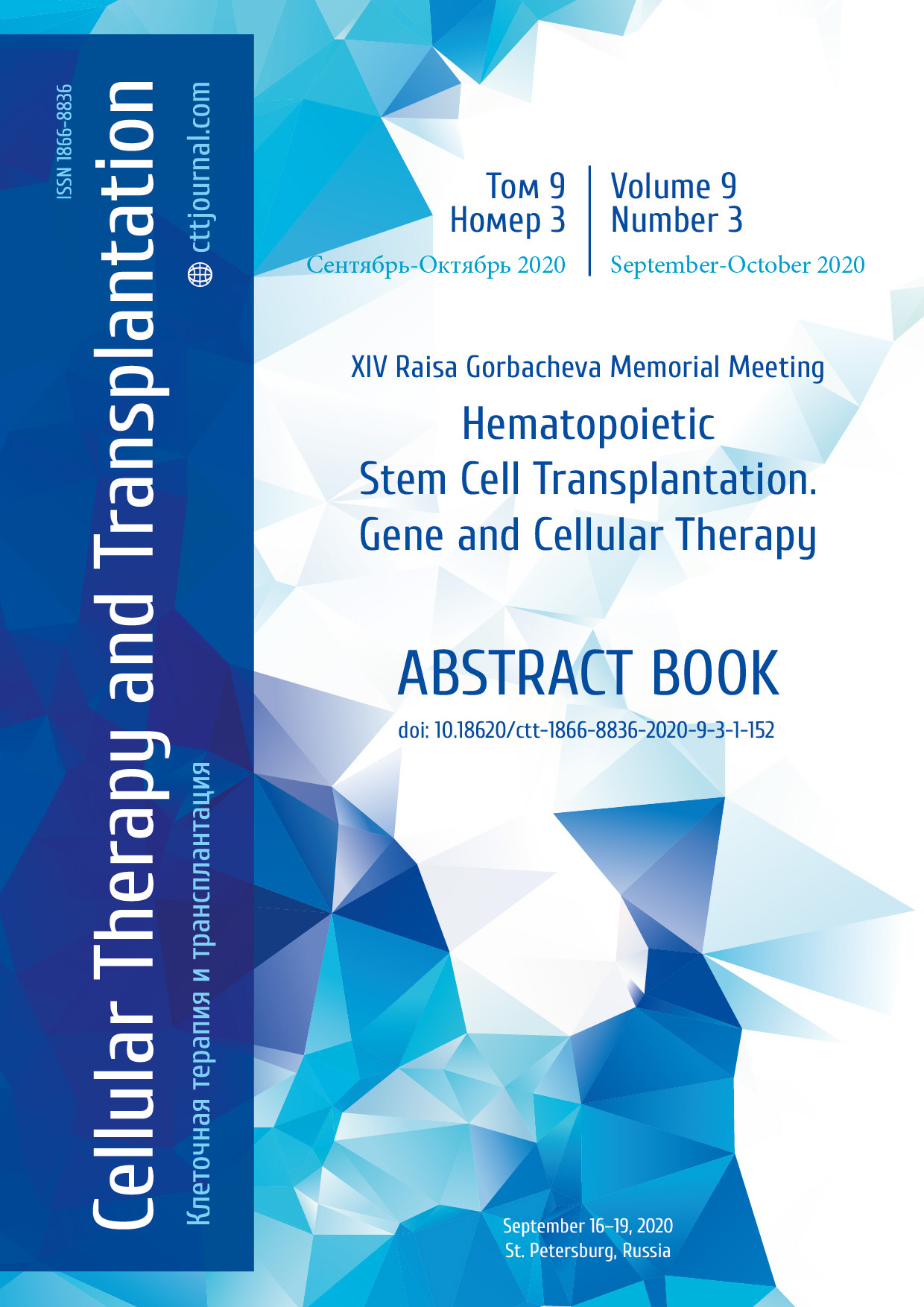PO-08. Features of hematopoietic stem cell apheresis in children with solid tumors weighing less than 15 kg: our experience
Nara G. Stepanyan, Natalia V. Sidorova, Nyne V. Matinyan, Kirill I.Kirgizov, Nikolay N. Tupitsyn, Svetlana R. Varfolomeeva
N. N. Blokhin National Medical Centre of Oncology, Moscow, Russia
Contact: Dr. Nara G. Stepanyan, e-mail: nara19922@yandex.ru
Summary
Introduction
Autologous hematopoietic stem cell transplantation (auto-HSCT) is an important stage in the treatment of pediatric malignancies, which improve treatment results. For successful auto-HSCT, hematopoietic stem cells (HSC) are collected with prior mobilization with the help of granulocyte colony-stimulating factor (G-CSF). However, HSC apheresis in children with low body weight represents difficulties, due to some technical and anatomical features. The purpose of our work was to analyze the experience of HSC collection in children with body mass under 15 kg for subsequent auto-HSCT.
Materials and methods
From 01.2020 to 08.2020, 12 HSC apheresis were performed in the children (5 girls and 6 boys) with body mass of <15 kg at the N. N. Blokhin National Medical Centre of Oncology. Neuroblastoma was a primary diagnosis in all the patients. Median (Me) of age was 2.6 years (7 months – 4 years), the median body weight was 14.1 kg (7.8-15 kg). All the patients received mobilization of CD34 + cells with G-CSF at a daily dose of 10-20 μg/kg administered once or twice per day. One child (a poor mobilize) was additionally injected with plerixafor at a dose of 120 μg/kg. Control of CD34+ cell levels was performed with BD FACSCanto II flow cytometer from the 3rd day of mobilization. Apheresis was performed with a Spectra Optia separator with MNC 6.9 and 11 software, at a flow rate of at least 10 mL/min, to ensure safe admission of the ACD-A anticoagulant. For apheresis, all patients underwent ultrasound-guided central venous catheter (CVC) placement. A two-channel Certofix 18/20 catheter, or a single-channel Certofix 16G to provide femoral access for blood harvest, was installed for the procedure, and the main CVC was used for return. The extracorporeal circuit of the separator was filled with a unit of donor blood irradiated at a dose of 25 Gr, which was selected individually (a day before apheresis, a biological test was carried out in a volume of 50 ml of erythrocyte suspension from the selected unit). Aiming to prevent hypovolemia and other complications, as well as quick access to intensive care, the procedures were carried out in the ICU department without sedation.
Results
Each patient underwent a single round of HSCs collection, all the collections (n=12) were successful. The average dose of CD34+ cells in the final product was 11.5×106 (1.72-31.7×106/kg). No significant side effects and complications were reported in the patients during apheresis. Three patients had technical difficulties due to CVC torsion at the time of blood harvesting, which were solved in cooperation with ICU doctors.
Conclusion
HSCs harvest in children with low body weight is a complex procedure that requires careful planning and mobilization of efforts from several departments at once. Additional training is required to ensure its success. It is a safe and tolerable method in case of usage of well-prepared algorithm.
Keywords
Hematopoietic stem cells, mobilization, apheresis, сhildren, low body mass.


